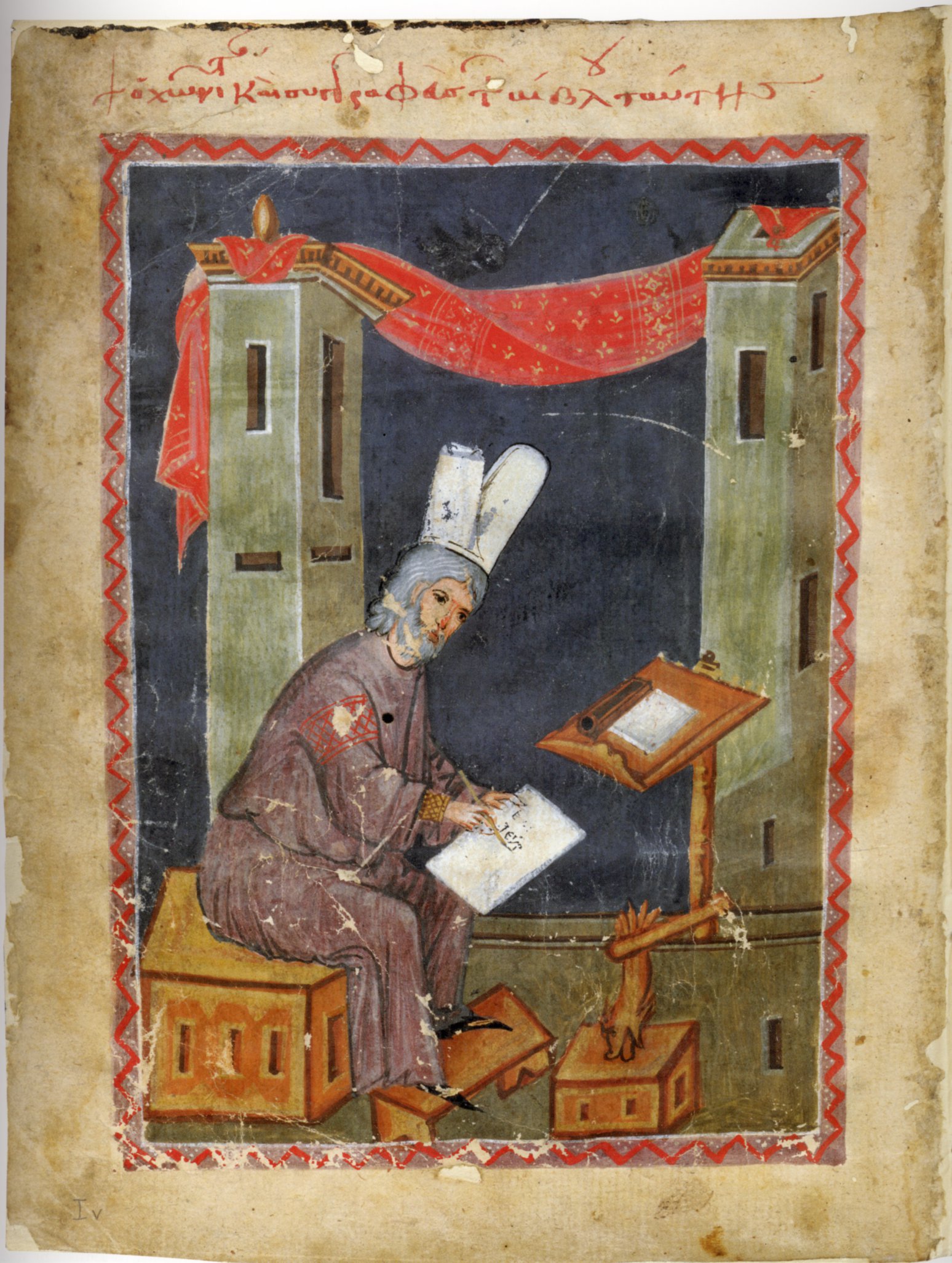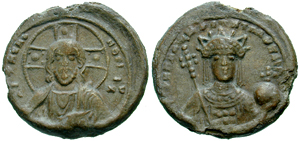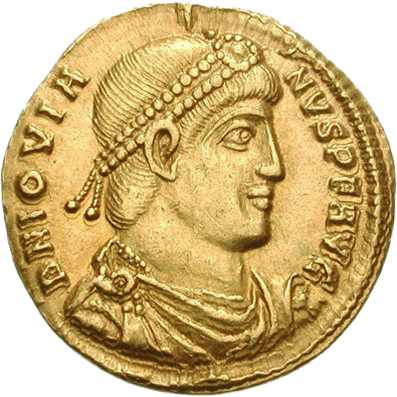|
Isaac Angelus
Isaac II Angelos or Angelus ( grc-gre, Ἰσαάκιος Κομνηνός Ἄγγελος, ; September 1156 – January 1204) was Byzantine Emperor from 1185 to 1195, and again from 1203 to 1204. His father Andronikos Doukas Angelos was a military leader in Asia Minor (c. 1122 – aft. 1185) who married Euphrosyne Kastamonitissa (c. 1125 – aft. 1195). Andronikos Doukas Angelos was the son of Constantine Angelos and Theodora Komnene (b. 15 January 1096/1097), the youngest daughter of Emperor Alexios I Komnenos and Irene Doukaina. Thus Isaac was a member of the extended imperial clan of the Komnenoi. Rising by revolt Niketas Choniates described Isaac's physical appearance: "He had a ruddy complexion and red hair, was of average height and robust in body". During the brief reign of Andronikos I Komnenos, Isaac was involved (alongside his father and brothers) in the revolt of Nicaea and Prousa. Atypically, the Emperor did not punish him for this disloyalty, a ... [...More Info...] [...Related Items...] OR: [Wikipedia] [Google] [Baidu] |
List Of Byzantine Emperors
This is a list of the Byzantine emperors from the foundation of Constantinople in 330 AD, which marks the conventional start of the Byzantine Empire, Eastern Roman Empire, to Fall of Constantinople, its fall to the Ottoman Empire in 1453 AD. Only the emperors who were recognized as legitimate rulers and exercised sovereign authority are included, to the exclusion of junior co-emperors (''symbasileis'') who never attained the status of sole or senior ruler, as well as of the List of Byzantine usurpers, various usurpers or rebels who claimed the imperial title. The following list starts with Constantine the Great, the first Christian emperor, who rebuilt the city of Byzantium as an imperial capital, Constantinople, and who was regarded by the later emperors as the model ruler. It was under Constantine that the major characteristics of what is considered the Byzantine state emerged: a Roman polity centered at Constantinople and culturally dominated by the Greek East and Latin West, ... [...More Info...] [...Related Items...] OR: [Wikipedia] [Google] [Baidu] |
Anna-Euphrosyne
Anna-Euphrosyne Angelina or Anna-Helena Angelina (?–1253), was a Grand Princess of Galicia and Volhynia by marriage to Roman the Great, in 1199–1205. She was regent of the Principality during the minority of her son Daniel of Galicia from 1205 to 1214. Life Early life She was the daughter of Byzantine Emperor Isaac II Angelos and Irene Palaiologina, a daughter of George Palaiologos (according to the Russian historian Aleksandr Mayorov).Budzinsky, O. The mystery of King is covered in name'. Zbruch. 23 April 2013 In the ''Galician–Volhynian Chronicle'' she is known simply as the Grand Prince of Roman. According to Aleksandr Mayorov, the first have the chronicle (Daniel of Galicia chronicle) is similar to Byzantine rather than Ruthenian historiography not out of coincidence. In his lection Mayorov tries to prove that not only the chronicle, but the prince himself has Byzantine origin, highly unlikely since he waged wars against the cumans (Cumanen/ Comnen), holding temporary sea ... [...More Info...] [...Related Items...] OR: [Wikipedia] [Google] [Baidu] |
Niketas Choniates
Niketas or Nicetas Choniates ( el, Νικήτας Χωνιάτης; c. 1155 – 1217), whose actual surname was Akominatos (Ἀκομινάτος), was a Byzantine Greek government official and historian – like his brother Michael Akominatos, whom he accompanied to Constantinople from their birthplace Chonae (from which came his nickname, "Choniates" meaning "person from Chonae"). Nicetas wrote a history of the Eastern Roman Empire from 1118 to 1207. Life Nicetas Akominatos was born to wealthy parents around or after 1150 in Phrygia in the city of Chonae (near the modern Honaz in Turkey). Bishop Nicetas of Chonae baptized and named the infant; later he was called "Choniates" after his birthplace. When he was nine, his father dispatched him with his brother Michael to Constantinople to receive an education. Niketas' older brother greatly influenced him during the early stages of his life. He initially secured a post in the civil service, and held important appointments under t ... [...More Info...] [...Related Items...] OR: [Wikipedia] [Google] [Baidu] |
Komnenoi
Komnenos ( gr, Κομνηνός; Latinized Comnenus; plural Komnenoi or Comneni (Κομνηνοί, )) was a Byzantine Greek noble family who ruled the Byzantine Empire from 1081 to 1185, and later, as the Grand Komnenoi (Μεγαλοκομνηνοί, ''Megalokomnenoi'') founded and ruled the Empire of Trebizond (1204–1461). Through intermarriages with other noble families, notably the Doukai, Angeloi, and Palaiologoi, the Komnenos name appears among most of the major noble houses of the late Byzantine world. Origins The 11th-century Byzantine historian Michael Psellos reported that the Komnenos family originated from the village of Komne in Thrace—usually identified with the "Fields of Komnene" () mentioned in the 14th century by John Kantakouzenos—a view commonly accepted by modern scholarship. The first known member of the family, Manuel Erotikos Komnenos, acquired extensive estates at Kastamon in Paphlagonia, which became the stronghold of the family in the 11th cent ... [...More Info...] [...Related Items...] OR: [Wikipedia] [Google] [Baidu] |
Irene Doukaina
Irene Doukaina or Ducaena ( el, , ''Eirēnē Doukaina''; – 19 February 1138) was a Byzantine Greek empress by marriage to the Byzantine emperor Alexios I Komnenos. She was the mother of Emperor John II Komnenos and the historian Anna Komnene. Life Irene was born in 1066 to Andronikos Doukas and Maria of Bulgaria, granddaughter of Ivan Vladislav of Bulgaria. Andronikos was a nephew of Emperor Constantine X Doukas and a cousin of Michael VII. Succession of Alexios Irene married Alexios in 1078, when she was still eleven years old. For this reason, the Doukas family supported Alexios in 1081, when a struggle for the throne erupted after the abdication of Nikephoros III Botaneiates. Alexios' mother, Anna Dalassene, a lifelong enemy of the Doukas family, pressured her son to divorce the young Irene and marry Maria of Alania, the former wife of both Michael VII and Nikephoros III. Irene was in fact barred from the coronation ceremony, but the Doukas family convinced the ... [...More Info...] [...Related Items...] OR: [Wikipedia] [Google] [Baidu] |
Alexios I Komnenos
Alexios I Komnenos ( grc-gre, Ἀλέξιος Κομνηνός, 1057 – 15 August 1118; Latinized Alexius I Comnenus) was Byzantine emperor from 1081 to 1118. Although he was not the first emperor of the Komnenian dynasty, it was during his reign that the Komnenos family came to full power and initiated a hereditary succession to the throne. Inheriting a collapsing empire and faced with constant warfare during his reign against both the Seljuq Turks in Asia Minor and the Normans in the western Balkans, Alexios was able to curb the Byzantine decline and begin the military, financial, and territorial recovery known as the Komnenian restoration. His appeals to Western Europe for help against the Turks was the catalyst that sparked the First Crusade. Biography Alexios was the son of John Komnenos and Anna Dalassene,Kazhdan 1991, p. 63 and the nephew of Isaac I Komnenos (emperor 1057–1059). Alexios' father declined the throne on the abdication of Isaac, who was ... [...More Info...] [...Related Items...] OR: [Wikipedia] [Google] [Baidu] |
Theodora Komnene (daughter Of Alexios I)
Theodora Komnene ( el, ; born 15 January 1096) was a Byzantine noblewoman, being the fourth daughter of Emperor Alexios I Komnenos and Irene Doukaina. She married Constantine Angelos, by whom she had seven children. Byzantine emperors Alexios III Angelos and Isaac II Angelos were her grandsons, thereby making her an ancestor of the Angelos dynasty. Family Theodora was born in Constantinople at 3 after midnight on 15 January 1096, the fourth of the five daughters, and seventh child overall, of Emperor Alexios I Komnenos () and Irene Doukaina. In she married the nobleman Constantine Kourtikes, but her husband died soon after—Theodora is mentioned as a widow in 1118—and the marriage remained childless. In , certainly after the death of Alexios I, she married a second time, to Constantine Angelos, a minor noble from Philadelphia. He was exceedingly beautiful, but Empress Irene apparently disapproved of it, and it seems to have soured her relations with Theodora, who is ... [...More Info...] [...Related Items...] OR: [Wikipedia] [Google] [Baidu] |
Asia Minor
Anatolia, tr, Anadolu Yarımadası), and the Anatolian plateau, also known as Asia Minor, is a large peninsula in Western Asia and the westernmost protrusion of the Asian continent. It constitutes the major part of modern-day Turkey. The region is bounded by the Turkish Straits to the northwest, the Black Sea to the north, the Armenian Highlands to the east, the Mediterranean Sea to the south, and the Aegean Sea to the west. The Sea of Marmara forms a connection between the Black and Aegean seas through the Bosporus and Dardanelles straits and separates Anatolia from Thrace on the Balkan peninsula of Southeast Europe. The eastern border of Anatolia has been held to be a line between the Gulf of Alexandretta and the Black Sea, bounded by the Armenian Highlands to the east and Mesopotamia to the southeast. By this definition Anatolia comprises approximately the western two-thirds of the Asian part of Turkey. Today, Anatolia is sometimes considered to be synonymou ... [...More Info...] [...Related Items...] OR: [Wikipedia] [Google] [Baidu] |
Byzantine Emperor
This is a list of the Byzantine emperors from the foundation of Constantinople in 330 AD, which marks the conventional start of the Eastern Roman Empire, to its fall to the Ottoman Empire in 1453 AD. Only the emperors who were recognized as legitimate rulers and exercised sovereign authority are included, to the exclusion of junior co-emperors (''symbasileis'') who never attained the status of sole or senior ruler, as well as of the various usurpers or rebels who claimed the imperial title. The following list starts with Constantine the Great, the first Christian emperor, who rebuilt the city of Byzantium as an imperial capital, Constantinople, and who was regarded by the later emperors as the model ruler. It was under Constantine that the major characteristics of what is considered the Byzantine state emerged: a Roman polity centered at Constantinople and culturally dominated by the Greek East, with Christianity as the state religion A state religion (also called relig ... [...More Info...] [...Related Items...] OR: [Wikipedia] [Google] [Baidu] |
Greek Orthodox
The term Greek Orthodox Church (Greek: Ἑλληνορθόδοξη Ἐκκλησία, ''Ellinorthódoxi Ekklisía'', ) has two meanings. The broader meaning designates "the entire body of Orthodox (Chalcedonian) Christianity, sometimes also called 'Eastern Orthodox,' 'Greek Catholic,' or generally 'the Greek Church. The narrower meaning designates "any of several independent churches within the worldwide communion of asternOrthodox Christianity that retain the use of the Greek language in formal ecclesiastical settings". Etymology Historically, the term "Greek Orthodox" has been used to describe all Eastern Orthodox churches, since the term "Greek" can refer to the heritage of the Byzantine Empire. During the first eight centuries of Christian history, most major intellectual, cultural, and social developments in the Christian Church took place in the Byzantine Empire or its sphere of influence, where the Greek language was widely spoken and used for most theological writings ... [...More Info...] [...Related Items...] OR: [Wikipedia] [Google] [Baidu] |
Euphrosyne Kastamonitissa
Euphrosyne Kastamonitissa was a Byzantine noblewoman of the Kastamonites family, a wife of Andronikos Doukas Angelos (a cousin of the ruling Komnenos dynasty) and mother of the two future Byzantine emperors from the Angelos family: Isaac II Angelos and Alexios III Angelos. Under Manuel I Komnenos Euphrosyne and Andronikos married . Together they had eight children, six sons and two daughters. However in 1179/80 Andronikos attempted to annul his legal marriage with Euphrosyne, so to marry another woman that he had fallen in love with. Andronikos' matrimonial plans failed thanks to the intervention of Emperor Manuel I Komnenos in support of Euphrosyne. A church synod that was asked to solve this issue also decided in favor of Euphrosyne. Under Andronikos I Komnenos During the reign of the Emperor Andronikos I Komnenos her family members rebelled against Andronikos, but the plot was uncovered. While most of the conspirators were seized and blinded by the Emperor, Andronikos and his ... [...More Info...] [...Related Items...] OR: [Wikipedia] [Google] [Baidu] |
Andronikos Doukas Angelos
Andronikos Doukas Angelos ( el, Ἀνδρόνικος Δούκας Ἄγγελος, – before 1185) was a Byzantine aristocrat related to the ruling Komnenos dynasty. During the reign of his cousin, Manuel I Komnenos, he served without success as a military commander against the Seljuk Turks, and as envoy to the Kingdom of Jerusalem. Following Manuel's death, in 1182 he was sent to stop the rebellion of Andronikos I Komnenos, but was defeated and eventually defected to him. Shortly after, he led a failed conspiracy of leading aristocrats against AndronikosI. When it was discovered, Andronikos and his sons fled the Empire, ending up in Acre, where he died. He was the father of emperors Isaac II Angelos and Alexios III Angelos. Life Andronikos was born around 1133, the third son of Constantine Angelos and Theodora Komnene, the youngest daughter of Emperor Alexios I Komnenos () and Irene Doukaina. Some time before 1155, probably around 1150, he married Euphrosyne Kastamoni ... [...More Info...] [...Related Items...] OR: [Wikipedia] [Google] [Baidu] |








